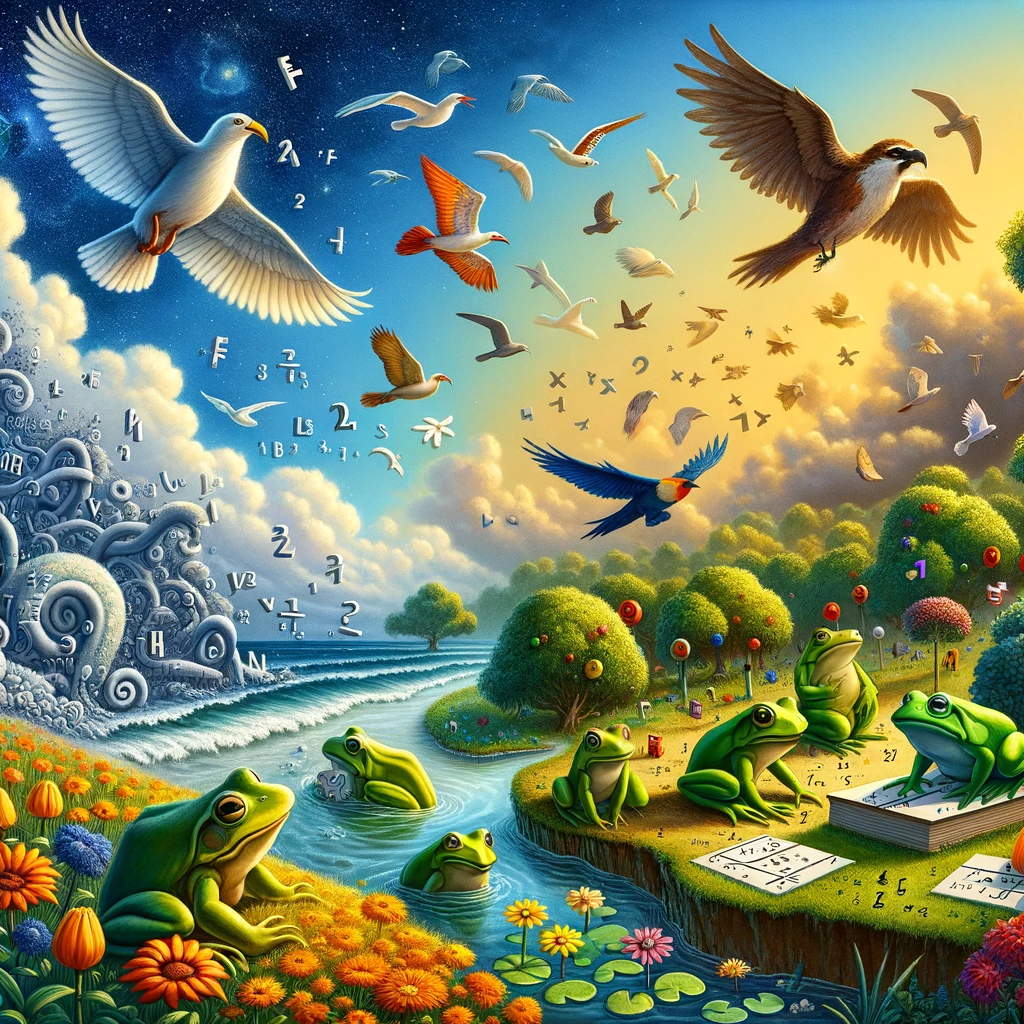The Birds, the Frogs, and Forgetting to Look Up
Published:
At the tail end of a meeting with my awesome PhD adviser the other day, he made a point to share with me a metaphor about mathematics originally discussed by the esteemed mathematician and physicist, Freeman Dyson, in 2009:
- “Some mathematicians are birds, others are frogs. Birds fly high in the air and survey broad vistas of mathematics out to the far horizon. They delight in concepts that unify our thinking and bring together diverse problems from different parts of the landscape. Frogs live in the mud below and see only the flowers that grow nearby. They delight in the details of particular objects, and they solve problems one at a time. I happen to be a frog, but many of my best friends are birds.”
His point was this: that at my now third year in my Ph.D., it’s time for me to get serious, settle down, and finally find a serious girlfriend with the intention of getting married and starting a family decide what kind of physicist I want to be and what I want my dissertation to be. In particular, he wanted me to decide whether I’m a bird – pulling inspiration and techniques from various doctrines and applying it to any and all physical problems I find interesting, or a frog – finding my corner of the swamp with interesting and necessary problems, and becoming an expert on the geography of that land.
That particular week, we happened to listen to talks from both a frog and a bird. The frog’s talk was in a section of the swampland1 that was interesting, but was not likely to make any significant impact. The bird’s talk was important yet very difficult work, tackling a serious problem that the broader theoretical physics community cares about. Results wise, the frog had many papers over the span of a few years – the follow ups and path was clear. The frog knew its stuff inside and out, and answered questions well. The bird had one paper, and many strong winds and obstacles in its path. Its work was just as important to physics as it was to machine learning. It struggled to answer some questions, and rightfully so. Of course, not all frogs and birds are like the ones I just described.
By virtue of being a string theorist, my adviser is a frog, but his research regime of the last few years has given him bird-like qualities. And by virtue of him asking me once, “Are you sure you shouldn’t have done your Ph.D. in computer science?”, I am a bird who needs some frog-like qualities in order to wrap this thing (being the Ph.D.) up eventually.
When I was first falling in love with (astro)physics, I vividly remember sitting in the passenger seat on a drive home late at night from Champaign, IL with my oldest sister. The drive tours you through the most rural parts of Illinois. It was one of my first times noticing and fully appreciating how beautiful a dark sky could be. I couldn’t enumerate the stars we saw. I couldn’t stop looking up.
Some 7 years later and I’ve first-authored three astrophysics papers and have never looked through a commercial telescope. I can’t remember the last time I looked up like I did during that drive from Champaign. The things that once blew my mind are now simple truths. Yes, the Universe is expanding. Yes, black holes are spacetime singularities that are some of the most extreme environments in our Universe. Yes, the Universe began with a big bang (it actually boggles my mind how many people don’t believe this, or believe that the “big bang” is just a theory. The big bang is a theory in the same way that evolution is just a theory. It happened).
I may be a bird, but perhaps I’ve become a bird that has too often looked to the horizon and forgotten the beauty of the land below. Maybe one of the curses of science is you get used to how cool it is. I’m on a mission now to rediscover the feeling that physics gave me so many years ago, and to hopefully keep looking up every now and then.

That quote from Freeman Dyson illustrated by DALL-E.
Side note: my previous use of “swampland” was not just to be illustrative, but is actually a term used to describe one of two schools of research active in string theory: swampland and string landscape. The string landscape refers to the vast array of possible Universes predicted by string theory, each with its unique set of physical laws, while the swampland hypothesis delineates those theoretical constructs that, despite appearing viable, cannot actually be realized within string theory. The string landscape is about what’s possible in string theory, and the swampland is about what’s not. In Boston, Harvard is famously very swampland, while MIT is very string landscape. ↩
